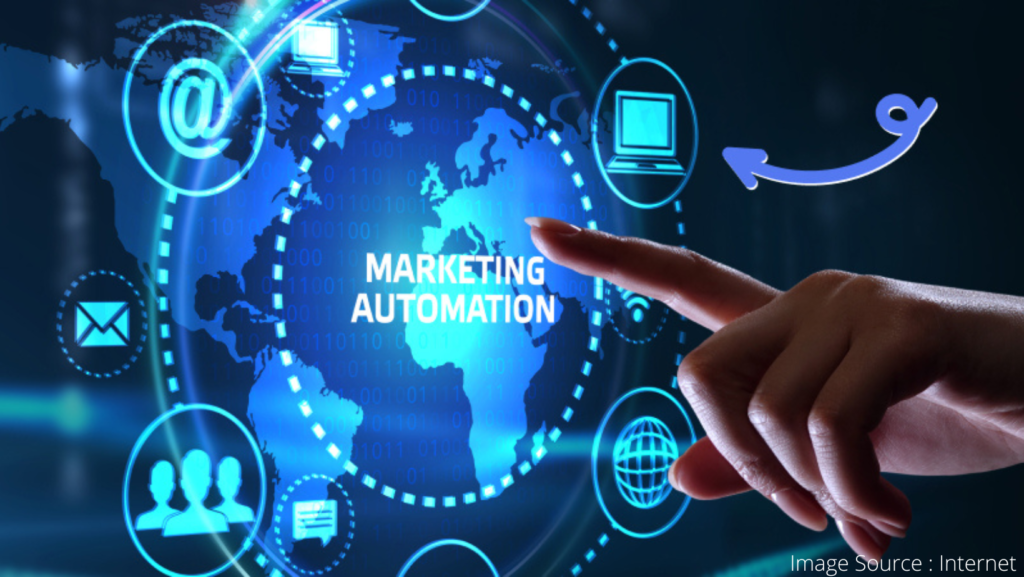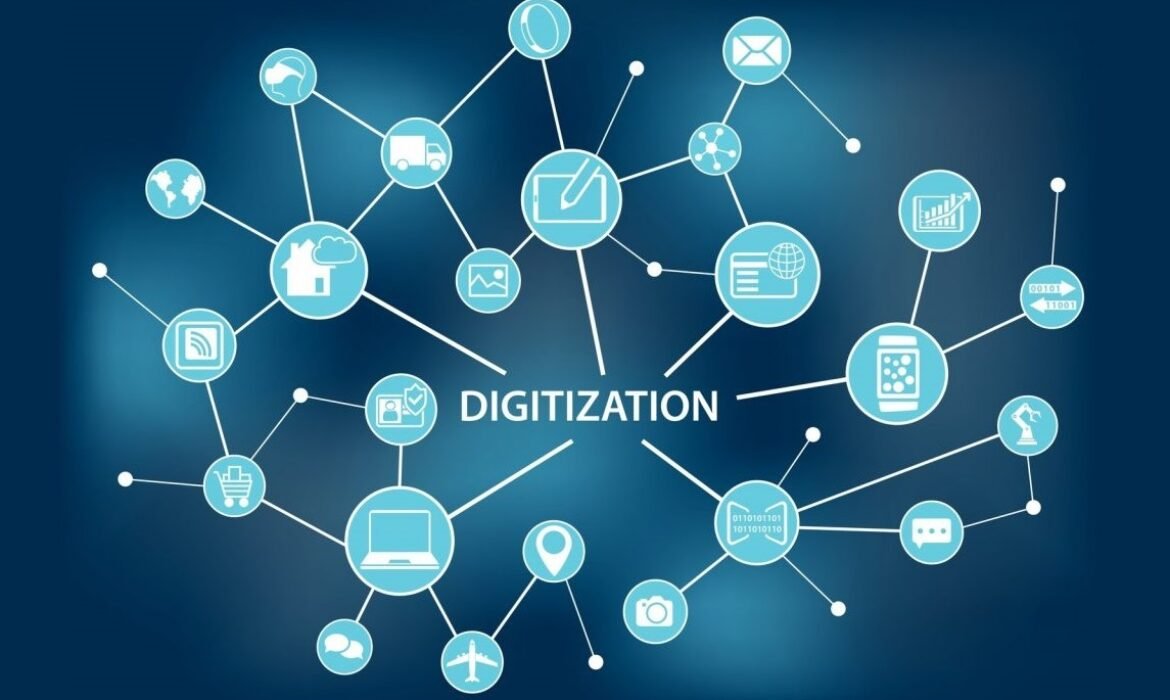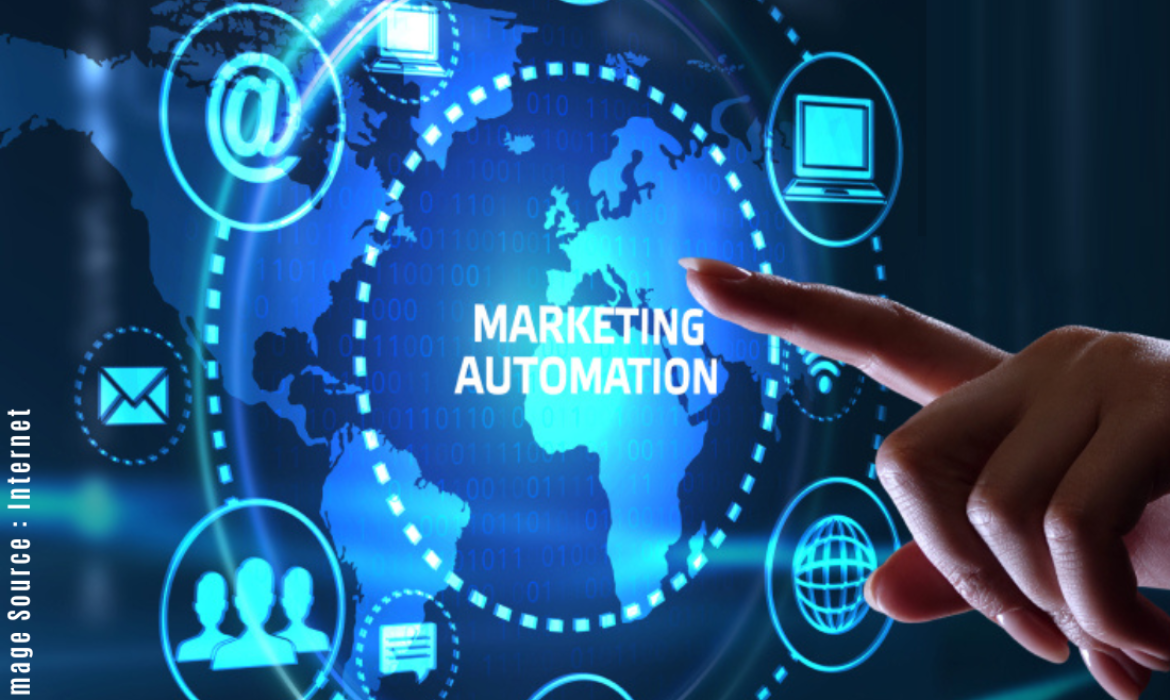Effective Digital Marketing Strategies for Colleges and Schools for Building a Strong Brand Presence
Digital marketing has become an essential part of the education industry, as educational institutions strive to reach a wider audience and engage with potential students.
And Social media marketing has become an integral part of the education industry’s digital marketing strategy. Educational institutions use social media platforms such as Facebook, Twitter, Instagram, LinkedIn, and YouTube to engage with prospective students, build brand awareness, and promote their programs.
Here are 20 benefits of social media marketing in the education industry:
- Increased visibility and brand awareness: Social media helps educational institutions to reach a wider audience and build their brand awareness.
- Improved communication: Social media platforms enable educational institutions to communicate with students, faculty, and staff in real-time.
- Cost-effective: Social media marketing is relatively cost-effective compared to traditional marketing methods.
- Targeted advertising: Social media platforms allow educational institutions to target their advertising to specific demographics, including age, location, interests, and more.
- Increased student engagement: Social media provides a platform for educational institutions to engage with prospective and current students and build relationships with them.
- Improved student recruitment: Social media can help educational institutions to attract and recruit more students.
- Increased website traffic: Social media can drive traffic to an educational institution’s website, improving its online visibility.
- Better SEO: Social media activity can improve an institution’s search engine rankings, making it easier for prospective students to find them.
- Enhanced reputation management: Social media can be used to manage an educational institution’s online reputation management and respond to negative feedback.
- Opportunities for collaboration: Social media can facilitate collaboration between educational institutions and other organizations.
- Improved alumni relations: Social media provides a platform for educational institutions to stay in touch with their alumni and engage them in events and activities.
- Increased event attendance: Social media can be used to promote events, resulting in higher attendance.
- Improved student retention: Social media can help educational institutions to improve student retention rates by engaging with students and providing support.
- Increased donor engagement: Social media can help educational institutions to engage with donors and encourage donations.
- Improved crisis communication: Social media can be used for crisis communication, allowing educational institutions to quickly communicate with their community during a crisis.
- Opportunities for faculty engagement: Social media can provide faculty members with opportunities to share their research and engage with other professionals in their field.
- Improved community outreach: Social media can be used to engage with the wider community and build relationships with local organizations.
- Increased international student recruitment: Social media can be used to attract and recruit international students.
- Improved student success: Social media can be used to provide resources and support to students, improving their chances of success.
- Improved employee recruitment: Social media can be used to attract and recruit talented faculty and staff members.
Overall, digital marketing provides numerous benefits for educational institutions, helping them to reach a wider audience, improve their online presence, and engage with their community.
10 ways social media marketing can grow your small business
Social media marketing can be a powerful tool for businesses of all sizes to reach and engage with their target audience, increase brand awareness, and drive sales and conversions.
Increased Brand Awareness: Social media provides a platform for small businesses to reach a wider audience and increase brand awareness.
Increased Website Traffic: Social media can drive traffic to your website through links to your blog or product pages.
Improved Customer Engagement: Social media allows for direct communication between businesses and their customers, improving engagement and building stronger relationships.
Cost-Effective Marketing: Social media marketing can be a cost-effective way for small businesses to reach their target audience compared to traditional marketing methods.
Targeted Advertising: Social media platforms allow for targeted advertising, ensuring that your message reaches the right audience.
Increased Sales: By using social media to promote your products or services, you can increase sales and revenue for your business.
Competitive Advantage: Social media can give small businesses a competitive advantage by allowing them to compete with larger companies in their industry.
Real-Time Customer Feedback: Social media allows businesses to receive real-time feedback from customers, helping them improve their products and services.
Improved Customer Service: Social media provides a platform for businesses to provide customer service and address customer concerns in a timely manner.
Data and Analytics: Social media platforms provide data and analytics that allow businesses to track the effectiveness of their marketing efforts and make data-driven decisions.
Overall, social media marketing can provide numerous benefits for small businesses, helping them increase brand awareness, drive website traffic, engage with customers, and ultimately increase sales and revenue.
Real estate CRM software – A powerful tool to automate your sales
A customer relationship management (CRM) system can be a valuable tool for real estate agents to manage their leads, clients, and business operations. Here are some tips for using a CRM system effectively in real estate:
Organize your leads: Use your CRM system to organize your leads into different stages, such as hot leads, warm leads, and cold leads. This will help you prioritize your follow-up efforts and focus on leads that are most likely to convert.
Automate your follow-up process: Use your CRM system to automate your follow-up process with leads. Set up email templates, autoresponders, and drip campaigns to stay in touch with your leads and nurture them over time.
Track your interactions: Use your CRM system to track your interactions with leads and clients. This will help you stay organized and avoid missing important follow-up tasks.
Customize your communication: Use your CRM system to personalize your communication with leads and clients. Address them by name, use their preferred communication channels, and tailor your messages to their specific needs.
Monitor your performance: Use your CRM system to track your performance and measure the effectiveness of your marketing campaigns. Use analytics and reporting tools to identify trends, track conversion rates, and optimize your marketing efforts.
Integrate with other tools: Integrate your CRM system with other tools such as your website, email marketing platform, and social media accounts. This will help you streamline your workflows and make your marketing efforts more efficient.
Here are some steps you can take to automate your CRM and help your sales team convert leads faster:
Set up lead capture forms: Create lead capture forms on your website and social media pages to capture leads automatically.
Automate Leads distribution: Set up your CRM to automatically route new leads to the appropriate agent for follow-up based on project type, budget or location.
Use email templates: Create email templates for common follow-up scenarios, such as initial contact, property inquiries, and appointment reminders. This will help your agents save time and ensure that their messaging is consistent.
Automate lead nurturing: Set up drip campaigns to nurture leads over time with personalized messages and content. Use CRM automation to send relevant information based on the lead’s interests and behavior.
Appointment scheduling software: Integrate appointment scheduling software with your CRM to enable leads to schedule appointments directly with agents. This will help reduce scheduling friction and improve conversion rates.
Implement chatbots: Use chatbots to engage with leads in real-time and answer common questions. This will help your agents save time and provide faster responses to leads.
Track lead behavior: Use your CRM to track lead behavior, such as website visits, property searches, and email engagement. Use this data to personalize your follow-up and identify opportunities to convert leads faster.
Generate automatic reports to track sales team activities on leads:
Lead activity report: This report provides a summary of all lead activities, including when the lead was added to the system, who is assigned to the lead, and all interactions with the lead, such as phone calls, emails, and appointments. It can help you identify the progress of each lead and the activities performed by agents.
Pipeline report: This report provides a snapshot of the leads in each stage of the sales funnel. It can help you track the progress of leads and identify any bottlenecks in the sales process.
Conversion rate report: This report provides an overview of how many leads were converted into clients. It can help you identify which agents are most effective at converting leads and which areas of your sales process need improvement.
Lead source report: This report provides insight into which marketing channels are generating the most leads. It can help you optimize your marketing efforts and allocate resources effectively.
Agent performance report: This report provides an overview of each agent’s performance, including the number of leads they are working on, the number of appointments they have set, and the number of deals closed. It can help you identify top performers and areas for improvement.
By using a CRM software system effectively, you can manage your leads, clients, and business operations more efficiently and effectively. Remember, the key is to stay organized, automate your sales process, and personalize your communication with leads and clients.
How to optimize e-commerce website to boost sales ?
Optimizing your ecommerce website is essential for improving user experience, increasing traffic, and boosting sales. Here are some tips to optimize your ecommerce website:
Simplify Navigation: Make it easy for visitors to find what they’re looking for. Use clear categories, labels, and subcategories that are easy to understand.
Optimize Site Speed: Slow loading times can lead to high bounce rates and poor user experience. Optimize images, reduce redirects, and use caching to speed up your website.
Mobile Optimization: With the increasing use of mobile devices, optimizing your website for mobile is crucial. Make sure your website is responsive, and the design is optimized for mobile screens.
Use High-Quality Product Images: Use high-quality images that showcase your products from different angles. Ensure the images load quickly, and include zoom-in features so customers can examine the details.
Improve Product Descriptions: Ensure your product descriptions are detailed, informative, and highlight the benefits of your products. Use bullet points, and keep the descriptions concise.
Provide Easy Checkout: A complicated checkout process can lead to shopping cart abandonment. Ensure the checkout process is simple, quick, and requires minimal information.
Use Reviews and Ratings: Displaying customer reviews and ratings can help build trust and credibility with potential customers. Encourage customers to leave reviews and ratings on your website and other platforms like Google and Facebook.
Utilize Search Engine Optimization: Optimize your website for search engines to increase traffic to your website. Use relevant keywords in product titles and descriptions, and ensure your website’s metadata is optimized for search engines.
Integrating social media : By making it easy for customers to share your products on social media, you are also encouraging engagement with your brand. Adding social media share buttons can also enhance the user experience on your ecommerce website. Customers can easily share products they love without leaving your website, which can improve their overall experience and increase the likelihood of a purchase. This can help build a community of loyal customers who are more likely to make repeat purchases.
Overall, optimizing your ecommerce website involves providing a user-friendly experience, high-quality product images, descriptions, and easy checkout processes, while also improving visibility through search engine optimization.
10 Unknown Benefits of Digitalization You Should Be Aware Of!
Organizations are seeking to incorporate digital technology in order to stay competitive, promote production and efficiency, and increase profit margins in this intensely competitive market. Because of its ability to induce significant revolutions in how organizations run through improving internal business processes, digitalization has taken the corporate world by storm.
Increased efficiency, productivity increases, lower operating costs, improved customer experiences, higher agility, enhanced staff morale, social inclusion, greater transparency, improved competitive edge, and speedier decision-making are just a few of the benefits of digitalization.
In this blog, we’ll look at the benefits of digitization for businesses.
What exactly is digitalization?
The process of utilizing digital technology to modify a corporate model in order to increase revenue or value-added prospects is known as digitalization. It is the transition to digitalization.
It encompasses the process of adapting traditional methods of operation to new technologies that embrace the promise of digital technology to collect data, discover patterns, and make better business decisions.
Top 10 Benefits of Digitalization
Organizations all over the world are changing their operations to make them digitally compliant. Many organizations have recognized the value of digitalization and have already converted to or invested in new marketing strategies. Consider the following: communications, music, eBooks, and internet commerce.
It is common knowledge that firms must constantly adapt in order to remain viable. Organizations in today’s digital world have no choice but to engage on the digitalization road.
Some of the benefits of digitization in business include increased efficiency, cost savings, and increased output. To summarize, it is literally a question of death and life for them.
The following are the top ten benefits of digitization:
1- Process Improvements
Every organization is constantly seeking new ways to increase efficiency. If you want to increase your business efficiency, you must begin on a digitalization path.
When a business procedure is automated, you should expect consistent results. Process automation and related company rules will assist your firm in achieving better openness and fairness.
Efficiency is described as the effective use of time, effort, and money to perform a task or accomplish a goal. One of the major benefits of digitization is that it reduces the amount of time it takes to perform a task, the amount of work required to complete it, and the expense of doing it correctly.
2- Increased Productivity
When simply automating manual repetitive operations, you relieve your staff from mundane job tasks and enable them to focus on more complex and innovative efforts that will help your organization run more efficiently.
Tasks can be completed more quickly and with fewer errors with the automation of business process solutions. Finally, process automation allows people to make greater use of their work time.
3- Reduce Operating Expenses
The goal of every business owner is to save hours and, more significantly, money. Because manual tasks and processes are performed one at a time, they are inherently slower than automated activities and processes.
Digitalization allows you to make the most efficient & cost-effective use of the primary resources.
4- Improve Transparency
Vital metrics can be collected and reported on to give you the critical information you require, based on the process you’ve chosen to automate (finance, billing, collections, sales, and/or support). Long-term success requires transparency in company procedures.
5- Consistency and quality
One of the most significant benefits of digitalization is that it ensures that each activity is performed consistently, resulting in high-quality, trustworthy output.
If you automate the customer service follow-up procedure, for example, your customers will always receive the same level of service from your organization.
Because of the certainty of quality and consistency, as well as the benefits of time and efficiency, you may develop a better understanding of higher-quality, greater feature-rich goods with little or no change in manufacturing time and costs.
6- Human Error is reduced
When procedures are automated, the possibility of human error is greatly reduced.
Humans are more likely to make mistakes than machines when performing jobs. Machines never tire and may operate continuously 24 hours a day. So let us delegate what we don’t want to do to computers and focus on more difficult things.
7- Reliability and Governance
You can rely on automated processes since they are constant. Workflow automation’s dependability ensures that important corporate governance operations were completed on time and in accordance with the law.
8- Increased Agility
Businesses must adapt to the fast-paced digital world now more than ever. They have to be able to react quickly to any market move, disruption, or fresh opportunity.
Organizations must be agile enough just to shift directions quickly, and to do so, agile approaches must be used throughout all departments.
9- Increased Employee Morale
Employees’ ability to learn, grow, and advance professionally is hampered when they are obliged to focus on manually repetitive duties. Employees gain from digitization since it eliminates these monotonous tasks, allowing them to focus on more important efforts and therefore improving morale.
10- Improved decision-making
Information management and digitalization go hand in hand since knowledge is created through the analysis of information, which results in improved decisions.
How Marketing Automation is changing the business landscape

Marketing automation technology is increasingly becoming an essential component of today’s business landscape. Marketers are discovering new ways to leverage marketing automation and CRM software to improve customer care, and digital marketing campaigns are generally taking their organizations to the next level, armed with rapidly rising customer data and a consumer base that is more digitally savvy than ever before.
This blog will look at how marketing automation is already influencing the industry and how CRM marketing automation may help your business grow faster. Before we get there, let’s define CRM automation.
What Exactly Is CRM Automation?
CRM (customer relationship management) automation refers to the method of integrating software to assist businesses in better managing their customer interactions. Automating client contact operations, tracking customer interactions, including managing customer data are all examples of this.
CRM automation is already having an impact on corporate operations. For example, automating specific operations such as responding to customer emails and phone calls, has helped to reduce customer service expenses. It has also aided in improving transaction speed and accuracy by automating the process of recording sales information.
CRM automation is going to have an even greater impact on firms as it evolves. CRM automation may help to automate operations such as marketing campaigns and product releases in the future. Companies would be able to focus their resources on other vital projects rather than tracking these behaviors.
What Impact Does Marketing Automation Have on Business?
Marketing automation is transforming the way firms function by automating many of the operations associated with marketing campaigns. This automates much of the work that was previously performed by humans, freeing up time and resources for more strategic activities.
Accelerating the process of creating and executing campaigns is one of the most typical marketing automation changes in the business. Companies can now launch ads faster and track results more precisely than ever before thanks to automation. Automation also enables more precise targeting of promotional efforts, ensuring that your campaigns reach the appropriate people at the right time.
Furthermore, marketing automation can assist organizations in tracking their development and correctly measuring their success. This data can then be used to fine-tune future campaigns and improve overall business operations
The Benefits of a CRM Marketing Automation
A marketing automation system can have a wide range of effects on your company. Here are five major advantages to using one:
Enhanced Efficiency
With a system in place, you can more effectively track and measure your marketing activities. This can assist you in determining where you can improve efficiencies and where new methods may be required.
Improved Engagement
Will help you engage your customers more effectively. Automating chores like email marketing can boost the likelihood of your customers opening and respond to your messages. This will result in improved conversion rates and higher sales volumes with the help of email marketing.
Improved Customer Connections
With a system in place, you can more effectively track and measure your marketing activities. This can assist you in determining where you can improve efficiencies and where new methods may be required.
Improved Engagement
Will help you engage your customers more effectively. Automating chores like email marketing can boost the likelihood of your customers opening and respond to your messages. This will result in improved conversion rates and higher sales volumes with the help of email marketing.
CRM marketing automation is among the most recent and fascinating company trends. It enables businesses to automate their marketing activities, saving time and money.
Businesses can use marketing automation tools to track and analyze their marketing initiatives. This data can then be utilized to develop future campaigns, identify which campaigns are most effective, and track the outcomes of each campaign.
CRM marketing automation automates the creation of personalized emails, newsletters, as well as other marketing materials. This reduces the amount of time-consuming physical labor.
CRM marketing automation is transforming how firms sell their goods and services. It is a critical tool that may help businesses become more productive & cost-effective. If you want to learn more about CRM marketing automation or wish to automate your business CRM process get in touch with Dizitude Marketing automation experts.










